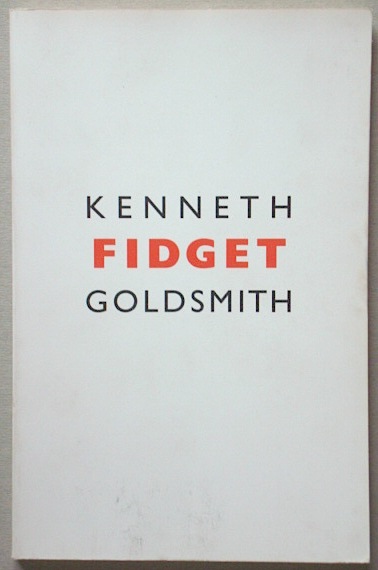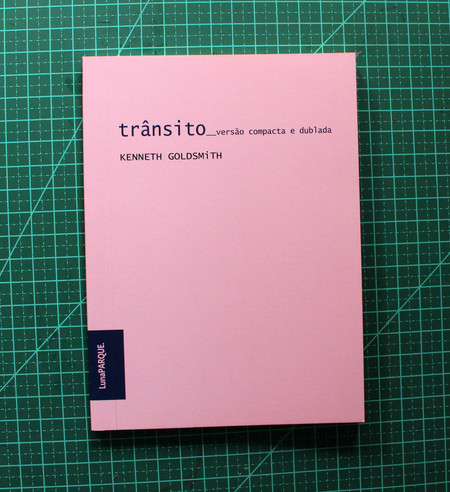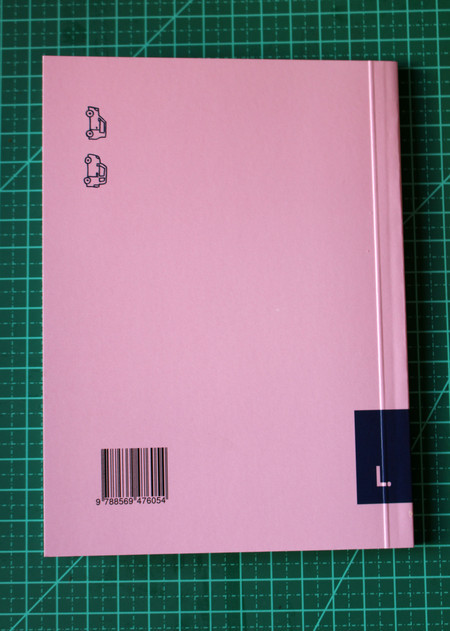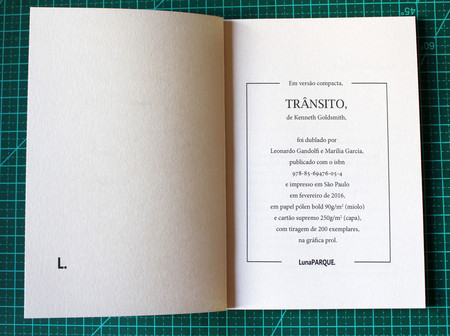
Kenneth Goldsmith
Fidget
Coach House Books, 1999
ISBN 1-55245-989-6
Fidget is a transcription of writer Kenneth Goldsmith’s every movement made during thirteen hours on June 16, 1997 (Bloomsday). This online edition includes the full text, a self-running Java applet version written by programmer Clem Paulsen, and a selection of RealAudio recordings from Theo Bleckmann’s vocal-visual performance at the Whitney Museum of American Art on Bloomsday 1998.
Fidget attempts to reduce the body to a catalogue of mechanical movements by a strict act of observation. Goldsmith aims to be objective like the photographer Edward Muybridge. In Fidget, Goldsmith reduces language to its basic elements in order to record and understand movement in its basic form. Despite these aims, the dictates of the work like the self-observation and the duration of the act, create a condition of shifting referent points and multiple levels of observation that undermine the objective approach.
Goldsmith and Paulsen’s collaboration has reconfigured the text of Fidget to substitute the human body with the computer. The Java applet contains the text reduced further into its constituent elements, a word or a phrase. The relationships between these elements is structured by a dynamic mapping system that is organized visually and spatially instead of grammatically. In addition, the Java applet invokes duration and presence. Each time the applet is downloaded it begins at the same time as set in the user’s computer and every mouse click or drag that the user initiates is reflected in the visual mapping system. The different hours are represented in differing font sizes, background colors and degree of “fidgetness”, however, these parameters may be altered by the user. The sense of time is reinforced by the diminishing contrast and eventual fading away of each phrase as each second passes.
Fidget was originally commissioned by The Whitney Museum of American Art at Philip Morris as a collaboration with vocalist Theo Bleckmann. The live performance was at The Whitney Museum of American Art at Philip Morris on June 16, 1998 at 8p.m. Bleckmann’s vocal interpretations of Fidget are available here in RealAudio. A gallery installation of Fidget opened at Printed Matter in New York City. Printed Matter featured Goldsmith’s collaboration with seamstress Sydney Maresca. The exhibition ran from June 11-September 4 1998.
Kenneth Goldsmith is the author of No. 111 2.7.93-10.20.96 (The Figures, 1997) and 73 Poems, a collaboration with vocalist Joan La Barbara (book 1994 by Permanent Press, compact disc 1994 by Lovely Music, Ltd.). His visual works have been exhibited in galleries and museums worldwide. Goldsmith is the editor of UbuWeb Visual, Concrete + Sound Poetry, a DJ at 91.1 WFMU in New York City, and a music critic at New York Press.
http://archives.chbooks.com/online_books/fidget/about.html
Salvar








